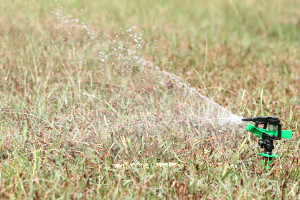 Is your yard a dated relic of California's water guzzling past, or, an exemplar of the drought-tolerant future that the state's trying to nudge us all towards? Image courtesy of Muhammad Mahdi Karim, www.micro2macro.net.GNU Free Documentation License 1.2
Is your yard a dated relic of California's water guzzling past, or, an exemplar of the drought-tolerant future that the state's trying to nudge us all towards? Image courtesy of Muhammad Mahdi Karim, www.micro2macro.net.GNU Free Documentation License 1.2
California: This is your new water budget.
In an effort to make plants guzzle less, the state has imposed new restrictions on how much water new and rehabilitated landscapes can use.
For instance, as of January 1st, whenever a developer in California plans a property – commercial or residential – that has at least 2500 square feet of yard and garden, he'll have to tailor the plantings to conform to the amount of water the state deems sufficient for that site. That's where the water budget comes in. More details on the ins and outs of what the state is now requiring can be found here. As I reported in my QUEST radio piece, some California cities are imposing tighter restrictions in hopes of saving more water. Check your city's water efficient landscape ordinance for details.
That being said, homeowners needn't worry that a crew of strapping regulators will be ripping up their front lawns. Existing landscapes won't be impacted by the new rules. But homeowners might wonder how their own landscaping would stack up if their properties were being built today. In other words, is your yard a dated relic of California's water guzzling past, or, an exemplar of the drought-tolerant future that the state's trying to nudge us all towards?
